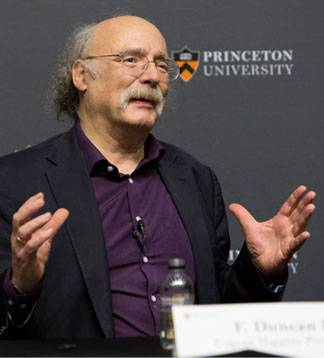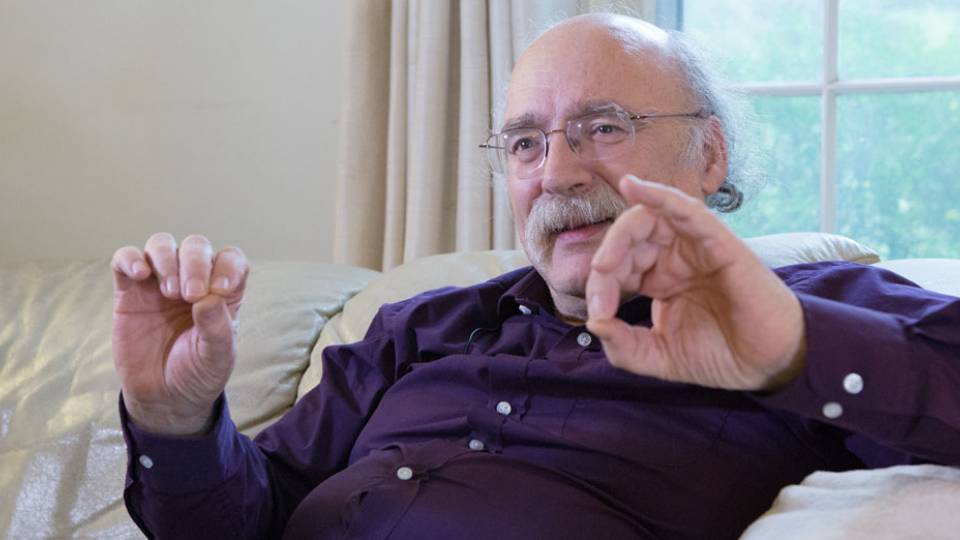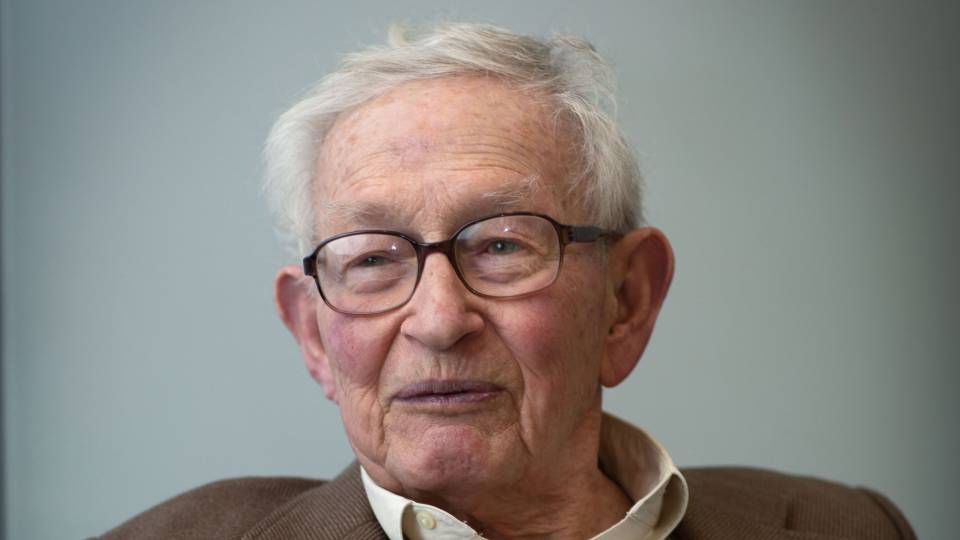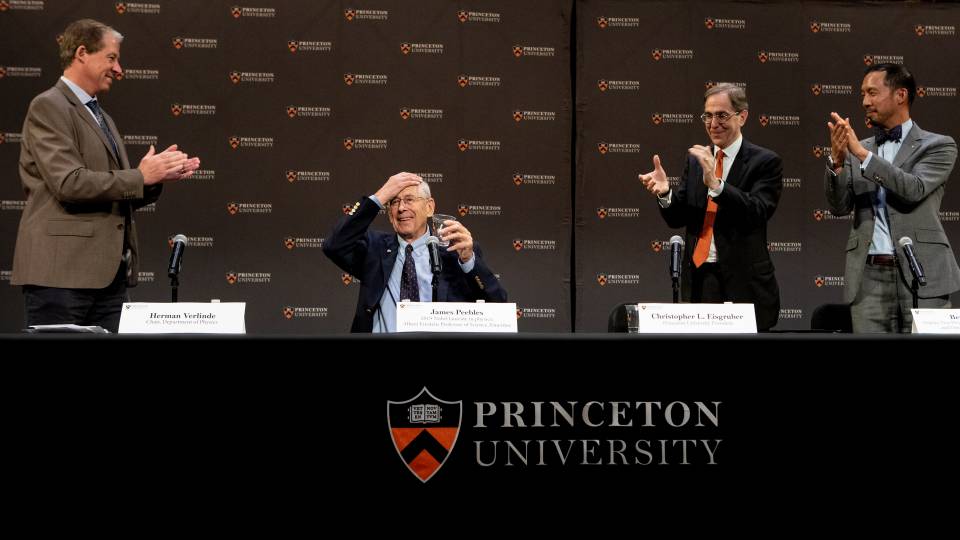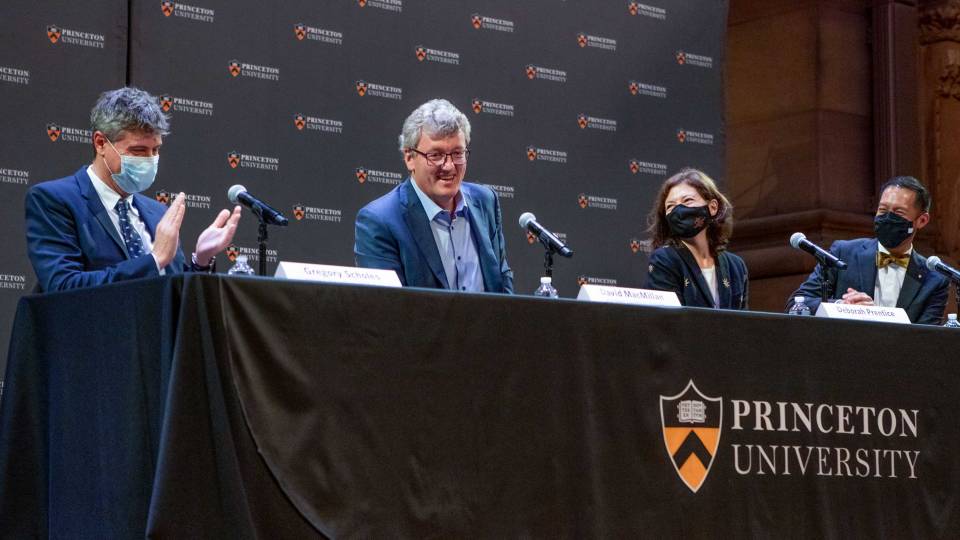Applause and cheers erupted from the first-year graduate students in the classroom on the lower level of Princeton's Jadwin Hall as soon as Princeton University physics professor F. Duncan Haldane walked in Tuesday to teach his first class as a Nobel Prize laureate, "Electromagnetism: Principles and Problem Solving."
With his unassuming yet jovial demeanor, Haldane, who was awarded the 2016 Nobel Prize in Physics on Oct. 4, wore a light smile as he ambled up to the long stand-alone counter at the front of the room and placed his weathered yellow backpack on top of it. "Thank you," he said in his English accent, lowering his head in slight bows as the clapping stopped.
After a pause, he asked, modestly, "Well, what can I say," eliciting laughter from the students. "I guess we'll have to double down and learn some electromagnetism and see where it goes," he said, prompting another round of "Congratulations!"
Haldane, Princeton's Eugene Higgins Professor of Physics, was one of three physicists to be recognized by the Royal Swedish Academy of Sciences Tuesday for "theoretical discoveries of topological phase transitions and topological phases of matter." He shares the prize with David Thouless of the University of Washington and J. Michael Kosterlitz of Brown University, who was a visiting professor at Princeton in 1978.
"It's very gratifying," Haldane said in the sitting room of his Princeton home Tuesday morning. "It was a sleeper, this work. It's really abstract, but really amazing."
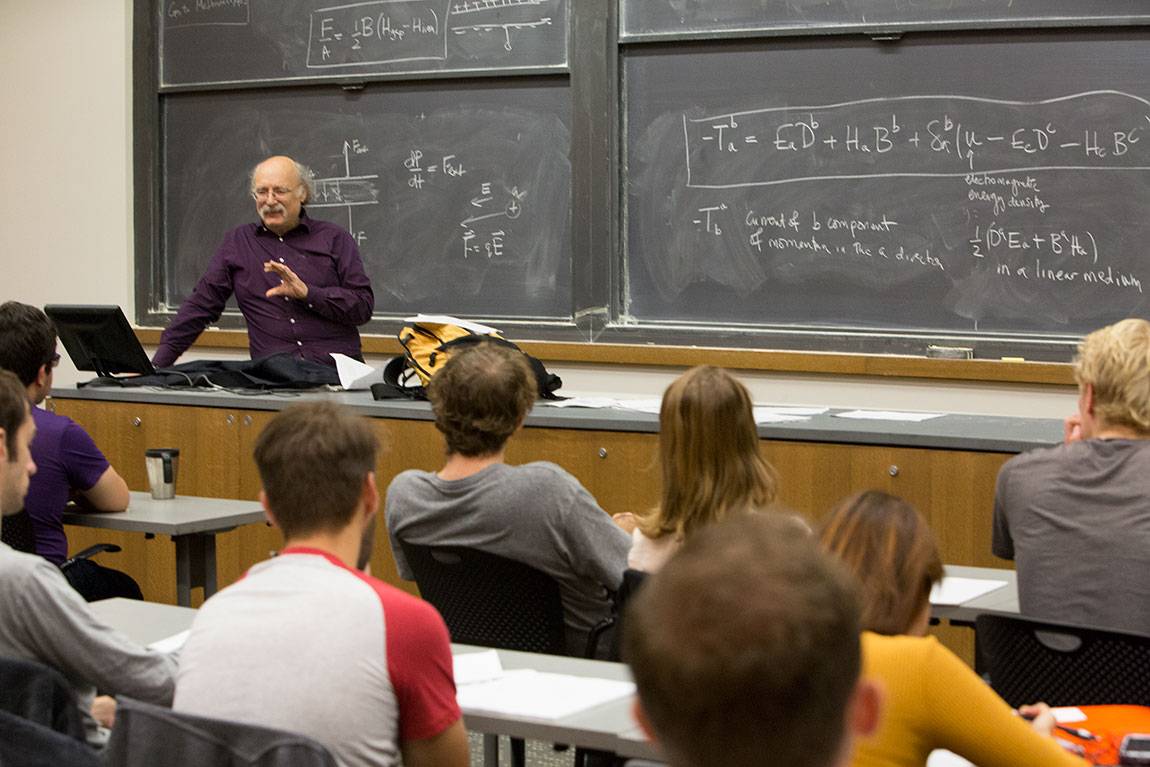
Haldane in Princeton's Jadwin Hall Tuesday morning teaching his first class as a Nobel laureate, "Electromagnetism: Principles and Problem Solving." As Haldane entered the room, his students erupted in applause and cheers.
A currently robust area of condensed matter physics, topological phases and materials are zero-temperature phases of matter that exhibit unique properties, particularly great stability and efficient particle movement. Topological materials are considered key to finally realizing highly efficient and powerful quantum computers.
During a packed University news conference in Princeton's Frick Chemistry Laboratory, Princeton President Christopher L. Eisgruber, who majored in physics as a Princeton undergraduate, said that Haldane joins a department that claims numerous Nobel laureates, including late-Princeton professor Val Fitch, who received the 1980 Nobel Prize in Physics when Eisgruber was a student.
"When I was up late at night, struggling through difficult problem sets in Fine Library, I would occasionally seek inspiration by walking through the halls of the physics building and gazing at the portraits of the many Nobel laureates who had studied in the department or served on its faculty," Eisgruber said. "I am delighted today to see this marvelous tradition extended as Professor Duncan Haldane becomes the newest addition to this extraordinary department's 'hall of fame.'"
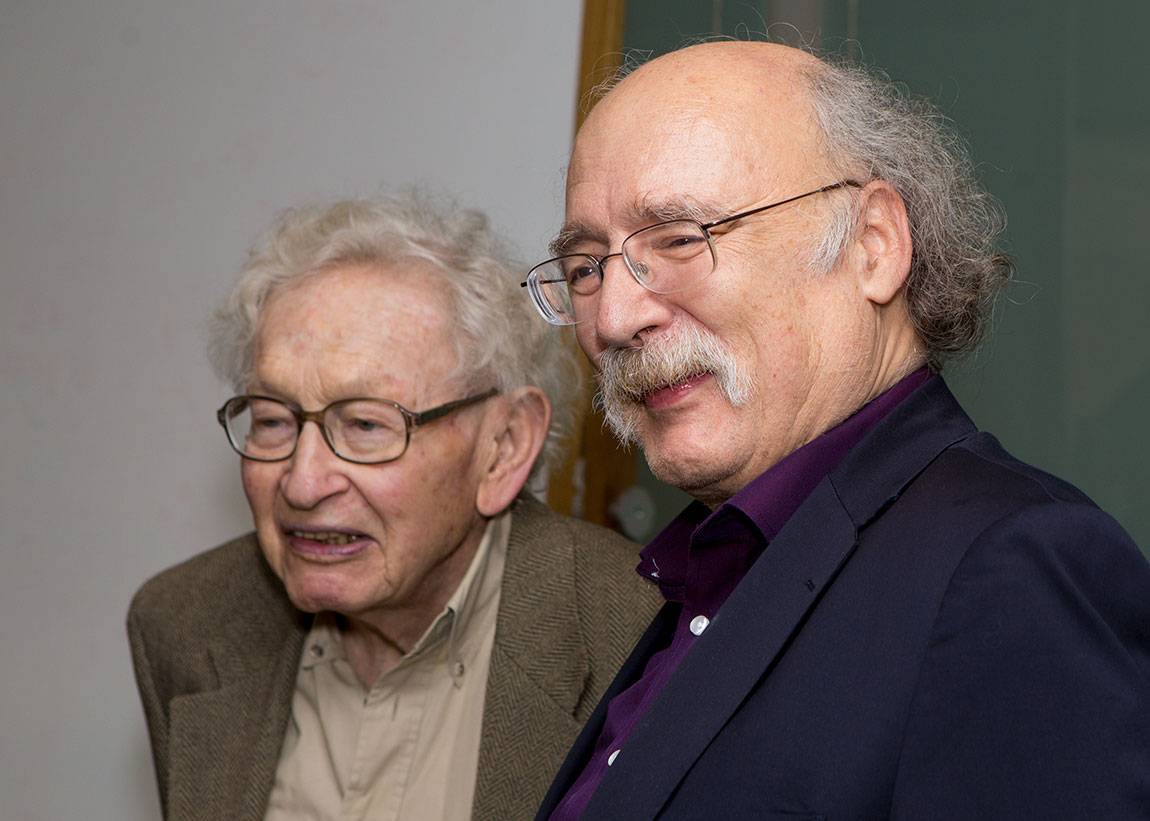
Philip Anderson, left, a Princeton physicist who was Haldane's graduate adviser, received a Nobel Prize in Physics in 1977. In his remarks, Haldane spoke of the important mentoring role Anderson had in helping shape his career.
At the news conference and reception, Haldane's colleagues reflected on his intellectual heft and congenial personality, which came out in Haldane's often-humorous remarks. When asked how he'd spend his prize money, for instance, Haldane said that most of it would go to the IRS.
"I was really guided in all this by the tremendous training and mentorship I had from my adviser [Philip Anderson, the Joseph Henry Professor of Physics, Emeritus, 1977 Nobel laureate in physics, and Haldane's graduate adviser] who really inspired me," Haldane said. "In fact, I had two opportunities at Cambridge — one to work with Phil, and one to go into string theory, which was about 10 years before its time. Luckily, I chose the right path."
He also discussed his brief career in chemistry as a student, saying: "After a few experiences in the chemical or biology lab, I decided I should not let myself near any kind of nasty chemicals or radioactive materials, so after having a few spills on myself I decided I was going to be a theorist."
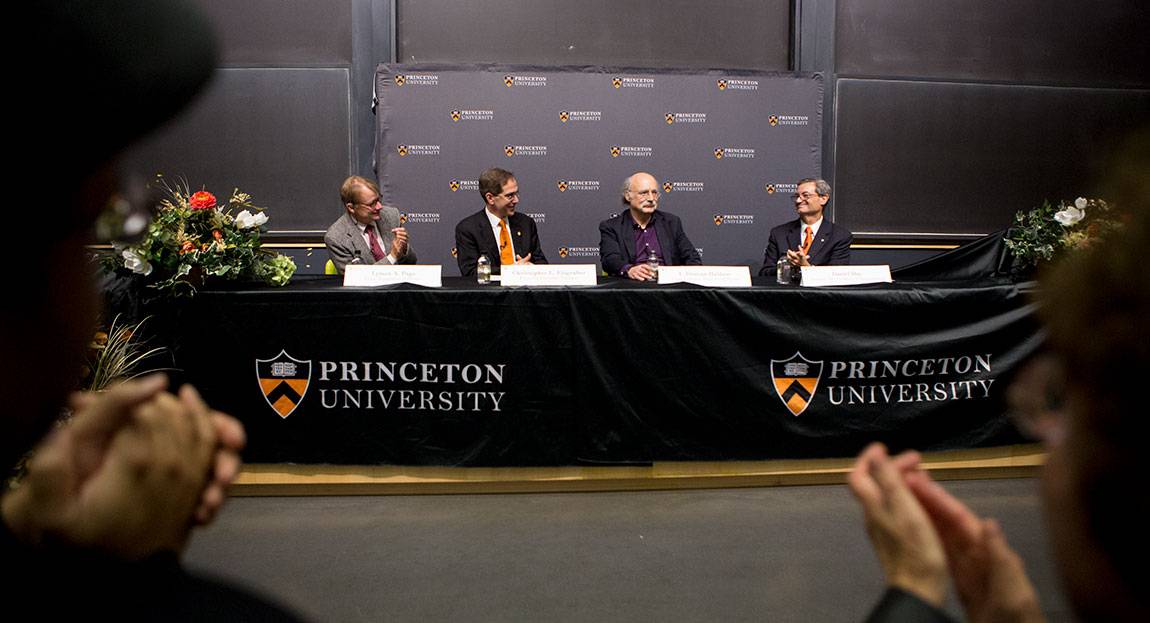
Haldane speaks to a packed auditorium in Taylor Auditorium in the Frick Chemistry Laboratory. Haldane was joined on stage by (from left): Lyman Page, the James S. McConnell Distinguished University Professor in Physics and department chair; Princeton President Christopher L. Eisgruber; and Daniel Day, assistant vice president for communications.
"This is a very special award for us. In a department of unusually creative people, Duncan stands out," said Lyman Page, the James S. McDonnell Distinguished University Professor in Physics and department chair. "In the broader theoretical community of physicists, he is known for his extraordinarily deep insights and mathematical elegance.
"In personality, you'll see Duncan is lighthearted and funny. He laughs a lot. He has an ironic sense of humor he sometimes shares at faculty meetings. He tries hard to feign administrative incompetence, but in the end he always comes through to help and support his colleagues and friends," he said. "Duncan is a reminder of the importance of environments and communities like Princeton where the pursuit of knowledge at the forefront of science can flourish. His exotic ideas came from his purely intellectual pursuit going back some 30 years."
Haldane, who joined Princeton's faculty in 1990, was honored for work he began in the early 1980s, shortly after he received his Ph.D. in physics from the University of Cambridge in 1978 — the last two years of which he completed as a visiting student at Princeton. A paper published in the journal Physics Letters A in 1983 used a "toy model" to explore the meeting place of normal matter and topological matter in a single layer of a one-atom thick sheet of carbon known as graphene.
The controversial paper bucked the conventional wisdom about how magnets behave, Haldane said. "At the time, it made a big stir because people said it's nonsense, it has to be wrong," he said. "It was blocked for publication, but I knew it was right." The paper eventually earned Haldane the American Physical Society's 1993 Oliver E. Buckley Condensed Matter Prize, which honors "outstanding theoretical or experimental" work.
A second paper published in 1988 in the journal Physical Review Letters used a theoretical model of two-dimensional materials to show that small materials could have topological properties, which would negate the need for huge magnetic fields. Haldane showed that in topological materials, particles move in one-way directions separated in the middle much like the lanes of a divided highway. This means quantum information could be transported at any angle without being degraded, Haldane said.
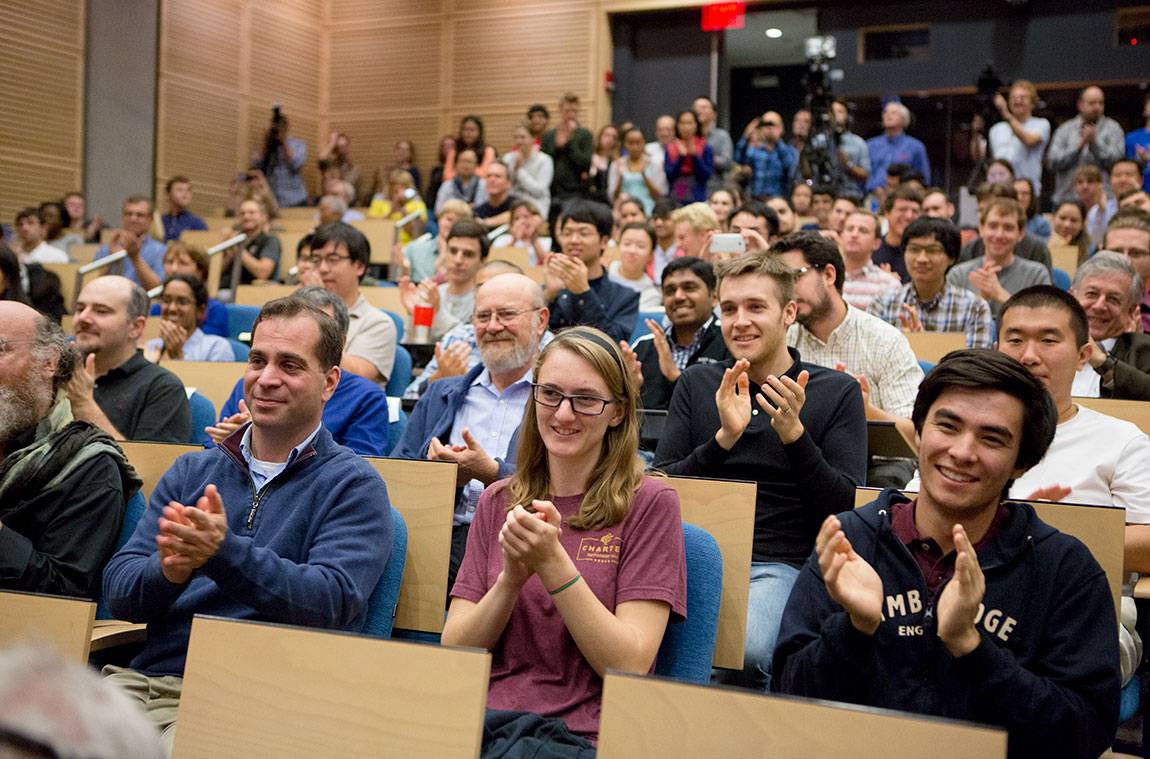
Princeton students, faculty and staff erupt in applause at the University news conference held Tuesday afternoon in celebration of Haldane receiving the Nobel Prize in Physics.
While intriguing to theorists, however, Haldane's work "sat around as an interesting toy model for a very long time — no one quite knew what to do with it," he said. Then in 2007, nearly a quarter-century after his paper in 1983, University of Pennsylvania researchers produced three-dimensional crystals exhibiting the qualities Haldane had theorized — which came as a pleasant surprise to Haldane.
"I put in the first paper that this is unlikely to be anything anyone could make — I kicked myself for not noticing it before," he said, laughing. "Now, that toy model is like the hydrogen atom for topological materials — it turned out to be the first example of topological quantum matter."
In the decade since Haldane's work was materialized, topological materials have become one of the most popular fields in condensed matter physics, said B. Andrei Bernevig, a Princeton professor of physics who often works with Haldane.
"Topological insulators is now one of the biggest fields in physics, one of the biggest in condensed matter physics. Because of his work, a lot of new materials have been discovered," Bernevig said. "I have hope that we'll have a materials revolution in a similar way that we had a revolution with the transistor in the '40s and '50s. There is huge promise to this area of research."
He attributed Haldane's accomplishments to his enthusiasm for physics. "There is nothing he enjoys more than to work 14 to 18 hours a day just doing physics," Bernevig said. "The way he thinks about things is unlike any other person — his process is highly uncommon, which is probably why he came up with so many of the amazing things he has. He does not come up with things in consecutive order — it is in flashes of brilliance."
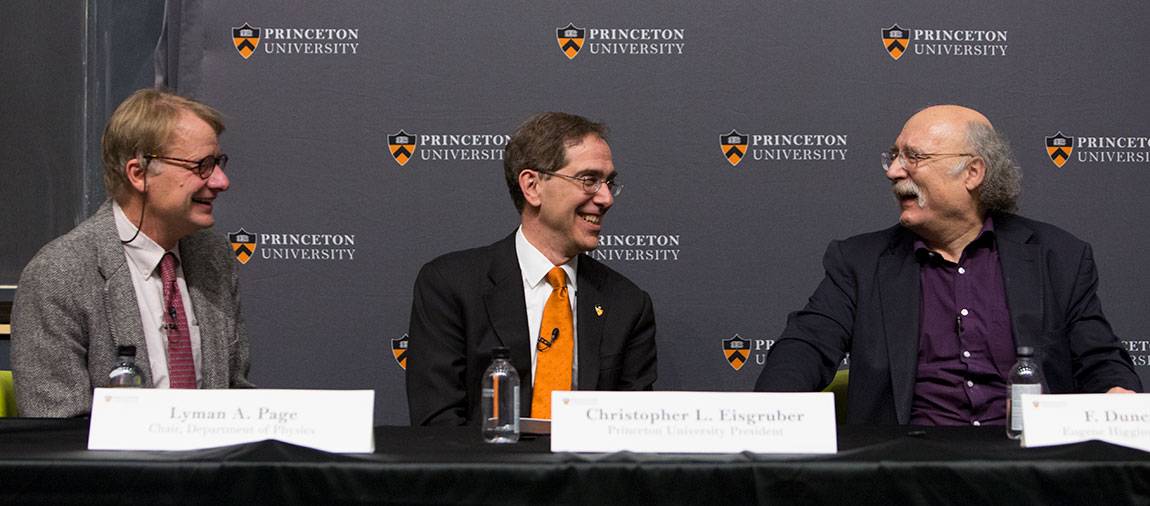
Humor and celebration filled the day as Haldane participated in the news conference and reception.
M. Zahid Hasan, a Princeton professor of physics whose creation of topological insulators helped confirm Haldane's models, said the Nobel win is "exciting news" for the field. "This is recognizing the early work in this field," he said. "These ideas may be abstract, but you can find a topological insulator in a rock, that is, in naturally occurring materials as well as ones we make in the lab. I can point to a piece of rock and tell you that these are topological. These Nobel laureates created a revolution in condensed matter physics, in materials science."
The 2016 Nobel physics prize emphasizes the importance of theoretical physicists, and their collaborations with experimental and materials scientists, Haldane said. "It's a vindication of ideas as opposed to measuring things or doing brute-force calculations," Haldane said. "After it became clear that these were real materials and not just theorists' dream materials, the field [of topological materials] exploded."
Robert Cava, Princeton's Russell Wellman Moore Professor of Chemistry, works with Haldane to create materials based on his theoretical models.
"Duncan came to talk to me 15 or 20 years ago when he wrote his paper on the topological physics of honeycomb lattices or something like that, and was asking me if I could think of a way to put it in a material. I think it is one of those cool conversations you have in life with people," Cava said.
"The theorist points us in a direction and you never know where it is going to lead," he said. "It is a beautiful kind of three-way thing with the theorists and the experimentalists and the materials makers."
"I have for several years in the back of my mind thought that Duncan really deserved the prize because of the absolutely fundamental nature of his work," said Anderson, Haldane's graduate adviser.
"The area of topological materials has been very much at the forefront [of condensed matter physics] for the last half-dozen or more years, and this has attracted the attention of people outside the field," Anderson said. "There has been a real explosion of exciting new results, but the fundamentals were laid by Thouless and Haldane."
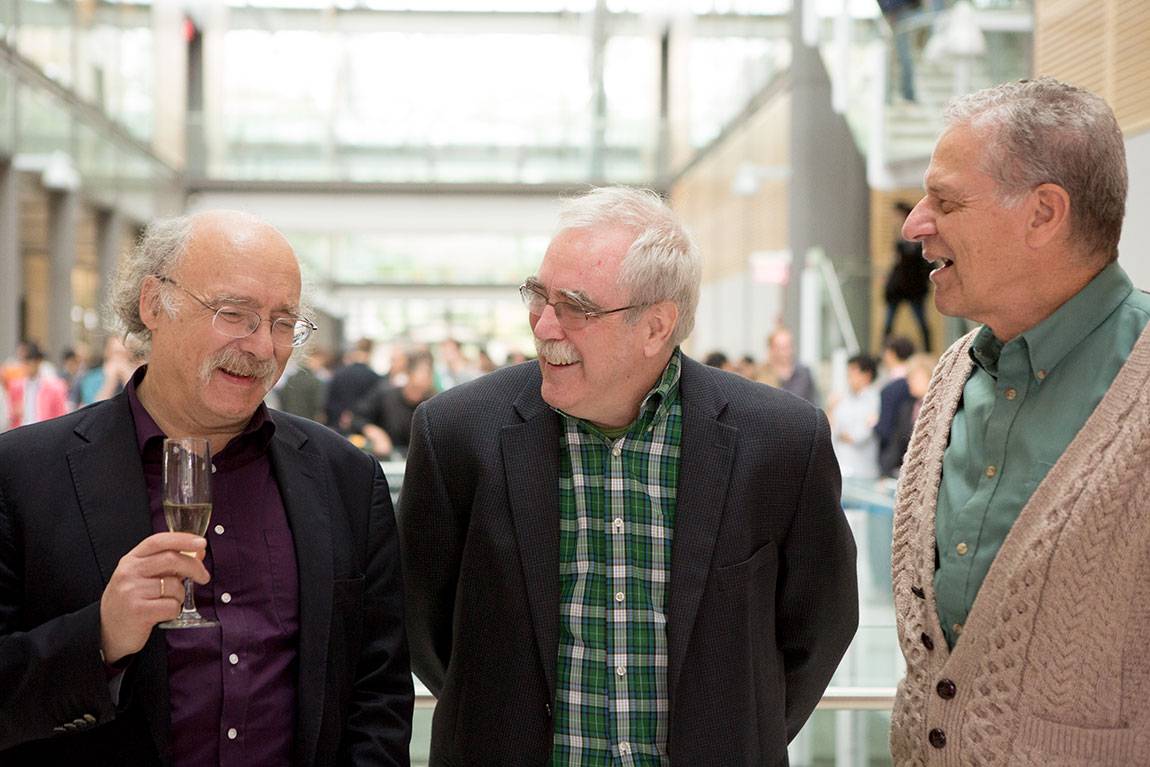
Haldane (left) joins two other Princeton Nobel laureates during the reception in his honor in the Frick atrium: Eric Wieschaus (center), the Squibb Professor in Molecular Biology and a 1995 laureate in physiology and medicine; and Joseph Taylor (right), the James S. McDonnell Distinguished University Professor of Physics, Emeritus, and a 1993 laureate in physics.
Haldane said that he learned from physicists such as Anderson that the best science can happen when people follow unclear intellectual paths to see where they lead.
"The power of simple models, the power of stripping things down — [Anderson] taught me the power of reducing everything to the simplest possible idea and following it to where it could go," Haldane said.
"You don't wake up in the morning and say, 'I'm going to find something big today,'" he said. "You have to be in the right place at the right time with the right background to notice that you found something big. Nature is more remarkable than we think. Until you imagine something is possible, you're going to miss it."
Haldane likewise encourages his students to confront scientific challenges with an open and enthusiastic mind, said Jie Wang, one of Haldane's graduate students.
"Discussing with him has always been enjoyable and inspiring," he said. "He is energetic, full of enthusiasm and is patient to students. What is more, during the discussions, he always brings his deep thoughts, inspiring conjectures as well as detailed calculations to us.
"From him, I gradually realized that to be a good physicist — brave ideas and detailed work, none of them could be omitted," Wang said. "'How to do physics' is probably what I will learn from him in the future."
Rajeev Erramilli, a member of the Princeton Class of 2018 and physics major, said, "It's amazing to be an undergraduate in a place where there are so many people doing such amazing and incredible work and getting international recognition.
"President Eisgruber commented that when he was an undergraduate in physics here, [Val Fitch was a] Nobel Prize winner, and that was one of the most memorable moments for him — that definitely parallels what's happening right now," Erramilli said. "I haven't lived the rest of my life yet, but I'm sure I'll remember this."
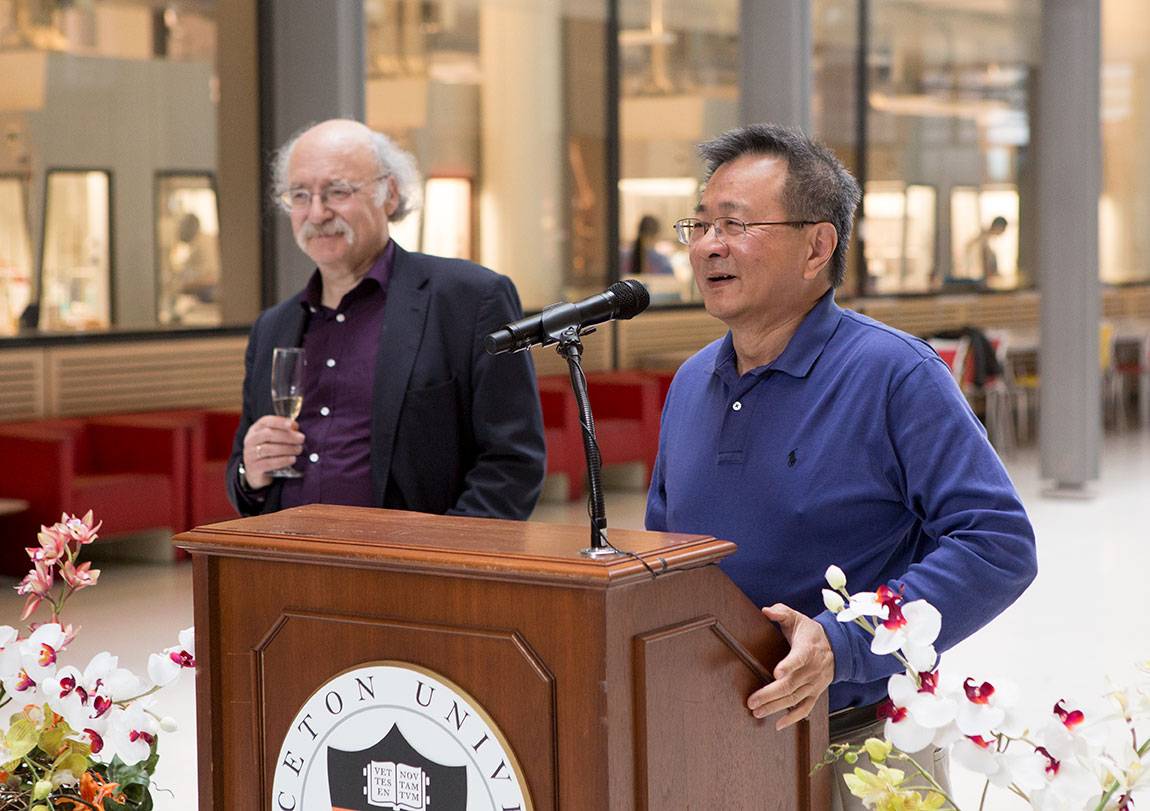
Nai Phuan Ong, Eugene Higgins Professor of Physics, lauds his colleague and Princeton's newest Nobel laureate as congratulations for Haldane came in from across campus and around the world.
Throughout the day, Haldane was asked why, after being woken up around 4:30 a.m. by a phone call from Sweden, then spending the morning speaking with press and many well wishers, would he still take 90 minutes to teach a class.
"It's a matter of duty and pride to go back and do one's job," Haldane said during the reception in the Frick Lab. "All these graduate students who come in, they have hopes and I think any one of them can discover something tremendous and new and possibly win a Nobel Prize."
Earlier, when asked the same question in his office, Haldane said, "This can be an inspiration for students. This, winning a Nobel Prize, has to be the dream of most of the people who start off in physics. And everyone has a chance."
Additional reporting by Catherine Zandonella, Office of the Dean for Research, and Jamie Saxon, Office of Communications.
